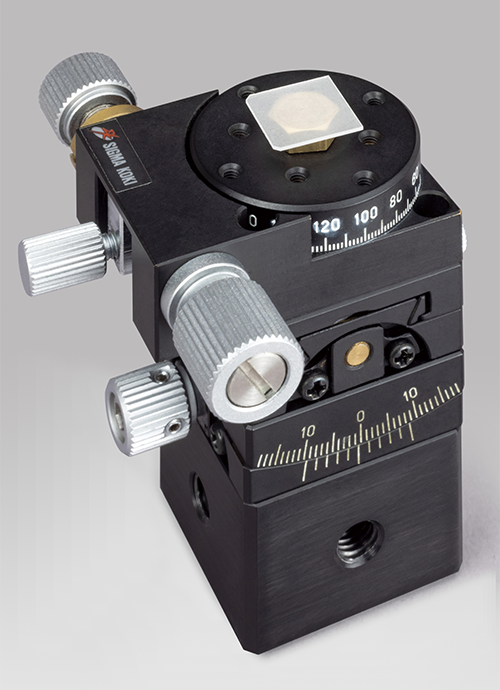
X-ray diffraction is a cornerstone technique essential for revealing the atomic and molecular arrangement within crystalline materials. There are two methodologies within X-ray diffraction: Single crystal and powder. Each approach presents unique advantages and applications in the study of crystalline structures.
This article will explore the primary differences between these methodologies, starting with single crystal X-ray diffraction.
Single Crystal X-ray Diffraction
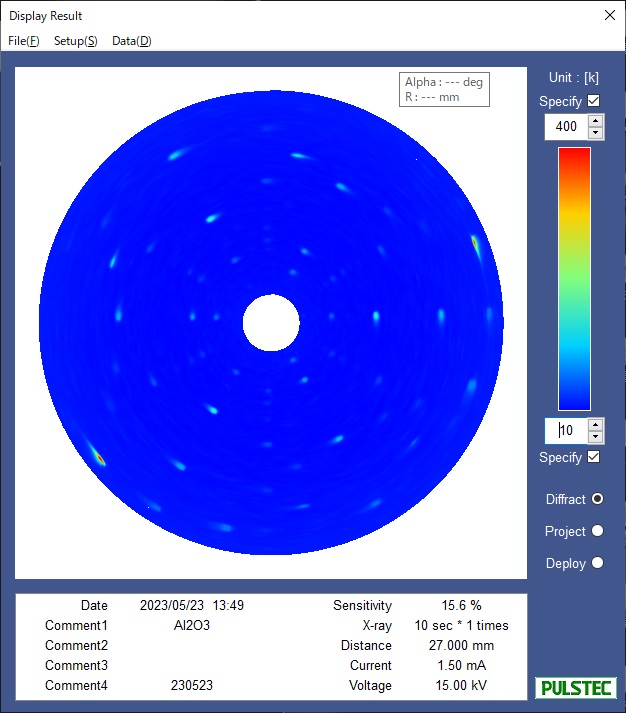
Single Crystal X-Ray Diffraction
Single crystal X-ray diffraction, sometimes referred to as Laue XRD, provides details about the internal lattice and structure of crystalline substances, like unit cell dimensions, bond lengths, angles, and atomic positions. The Laue XRD method leverages the principle of constructive interference of monochromatic X-rays with the crystal when Bragg’s Law is satisfied. You can read more about the Laue Method in our detailed guide.
Single Crystal Diffraction Patterns
In X-ray crystallography, single crystal X-ray diffraction patterns are a sight to behold. Like a constellation in the night sky, the patterns resemble ordered arrays of spots, with each dot representing the intersection of diffracted X-rays (please see image above). These diffraction spots are a manifestation of Bragg’s Law and Laue XRD, indicating constructive interference of X-rays diffracting off planes in the crystal lattice.
Each spot holds an abundance of information about the atomic structure of the crystal. The location of a spot helps determine the angle of diffraction and relative orientation of atoms, while its intensity can reveal details about electron density.
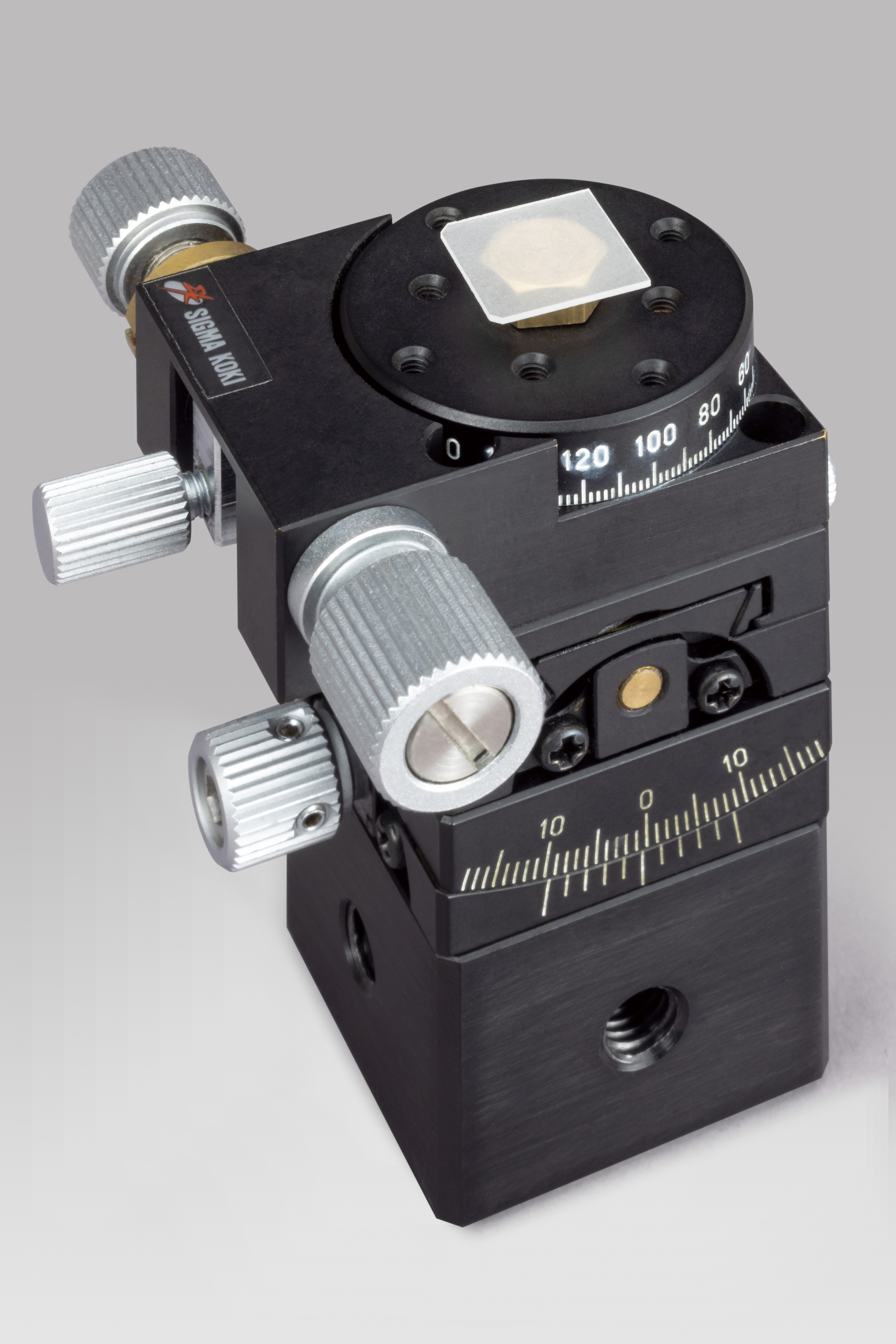
Advantages
- Provides Highly Detailed Structural Information: Single crystal XRD offers unparalleled insights into the atomic structure of a crystal down to bond lengths and angles.
- Non-Destructive Technique: The analysis does not alter or damage the sample, allowing repeated measurements or further analysis of the same sample.
- Unsurpassed Precision: This technique offers the ability to determine atomic positions with high precision, often better than a few thousandths of a nanometer.
- Broad Application Range: Besides identifying unknown crystalline substances, XRD can determine unit cell dimensions, quantify mineral amounts, and even measure purity. It can also provide crucial data like thin film properties and texture measurements.
Disadvantages
- Sample Size & Quality: The single crystal XRD method requires large crystal sizes and is better performed on single crystal samples rather than polycrystalline.
- Data Collection Time: Acquiring a dataset can take additional time, especially compared to other analysis techniques.
- Complexity in Data Analysis: Without the proper analysis tools, the data requires careful processing, correction, and transformation to generate meaningful results, making this method less accessible to non-specialists.
Common Applications
- Structural Determination: Single crystal diffraction is a powerful tool often used to determine the three-dimensional arrangement of atoms in a crystal, thereby revealing its precise atomic structure.
- Phase Identification: This technique can be applied to identify different phases present within a material, helping to understand its structural and chemical composition.
- Molecular Chemistry: In the field of molecular chemistry, single crystal diffraction is used to determine the structure of complex molecules, allowing for the study of their function and behavior.
- Orientation Determination: Single crystal materials exhibit varying strength based on crystal orientation. Critical single crystal metals, such as those used in airplane turbines, are manufactured with careful consideration of crystal orientation. In the semiconductor industry, the crystal orientation of the target material, typically a silicon wafer, can significantly influence the success and efficiency of ion implantation for various reasons, including channeling effects.
- Materials Science: Single crystal diffraction also plays a crucial role in the study of a material’s properties, contributing significantly to the development of new materials.
Powder X-Ray Diffraction
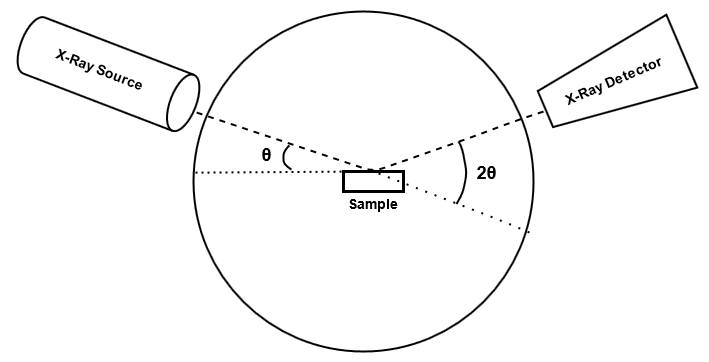
Powder X-ray diffraction (XRD) is a technique used to identify the crystal structure of materials. The process works by directing X-rays at a powdered sample of the material.
As the sample is rotated, a detector picks up the X-rays that are diffracted at specific angles according to the distances between the planes of atoms within the crystal structure. The information collected by the detector is used to create a unique profile of the material, which can help identify its crystalline structure.
Powder XRD Patterns
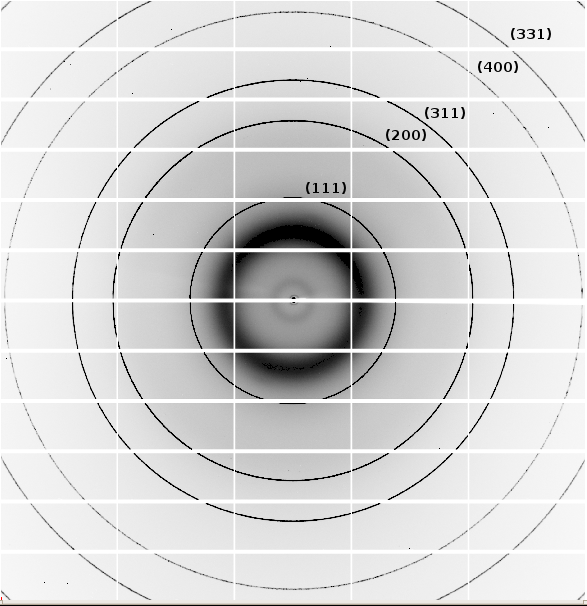
Unlike single crystal XRD, powder XRD is used to analyze numerous small crystallites oriented randomly. As X-rays strike these crystals, they produce diffracted rays, which form continuous concentric rings on a detector. Each ring corresponds to one set of identical planes within the crystalline lattice.
The result is an intensity versus 2θ plot, where 2θ represents the diffraction angle. Each peak on this plot indicates a successful hit—an instance where the conditions of Bragg’s Law were satisfactorily met. The location of these peaks corresponds to the ‘d-spacing’ in the crystal lattice, and by comparing these to reference patterns, one can identify the material under analysis. Powder XRD patterns might seem less intricate than single crystal patterns but in their simplicity lies their strength—their practicality and relative ease of application make them an essential tool in identifying unknown crystalline substances or assessing the purity of a known substance.
Advantages
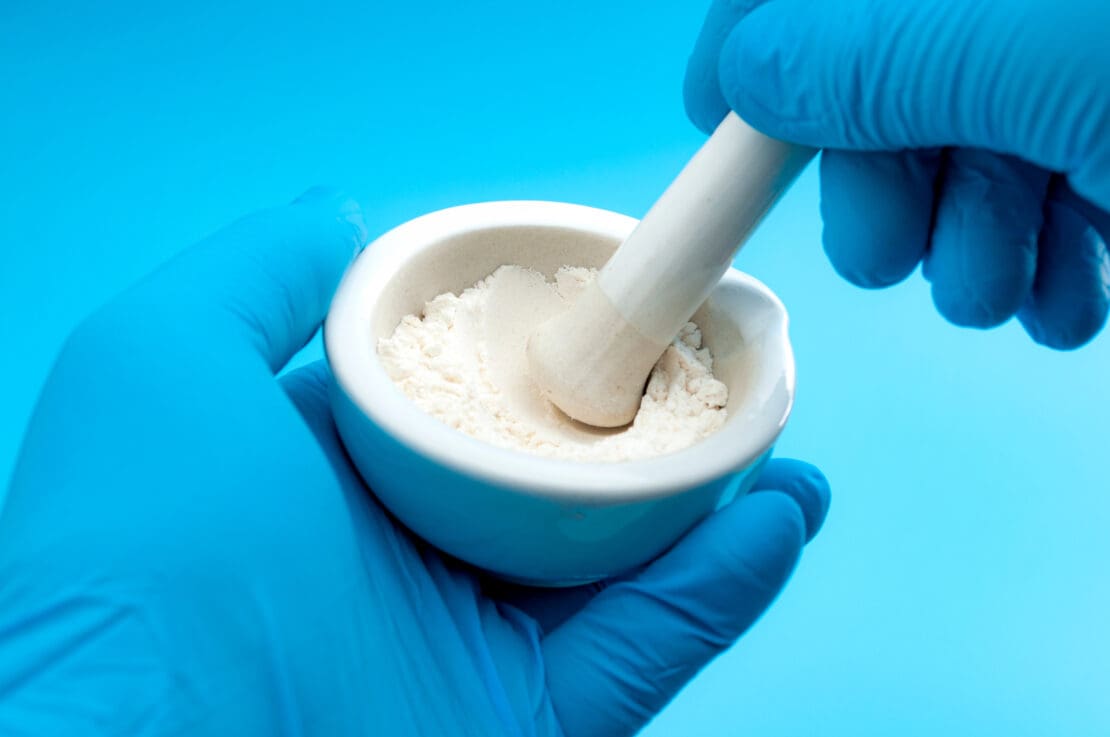
- Rapid Identification: Powder XRD provides quick and definite results (often under 20 minutes), which can be crucial when time is of the essence. The entire process, from directing the X-rays to obtaining results, usually takes a few hours.
- Minimal Sample Preparation: The need for relatively little prep makes it user-friendly and resource-efficient. The sample needs only to be powdered to specific dimensions.
- Handles Multi-Component Mixtures: The Powder XRD method can handle samples that consist of multiple components. It can detect and separate the diffraction peaks of different components in a mixture and provide comprehensive structural information.
- Versatile Sample Types: Powder X-ray diffraction can be performed on various samples. These include powders, sintered pellets, or coatings on substrates, making it incredibly versatile in its various applications.
Disadvantages
- Requires a Homogeneous Sample: XRD relies on the assumption that each particle in an analyzed sample is identical in composition. This limitation prevents it from being completely accurate when dealing with heterogeneous samples, where mixed materials can have a detection limit as low as approximately 2% of the sample.
- Inefficient Measurement Technique: Due to its working principle, only a small fraction of crystallites in a specimen contribute to the measured diffraction pattern, thus making it inefficient.
- Limited to Reference Patterns: In the Powder XRD method, to identify an unknown substance, the diffraction pattern must match one of the existing reference patterns, potentially limiting its applications.
- Particle Size Limitations: Optimal results with XRD are obtained only when the sample particles are less than 10 micrometers in size. This limits the type and condition of samples that can be effectively analyzed.
- Peak Overlay Occurrence: For high-angle reflections, peak overlay may occur. This peak overlay may worsen even further as the angle increases.
Common Applications
- Phase Analysis: Powder XRD is an excellent technique for performing phase analysis of polycrystalline samples, helping identify the different stages or forms of a substance.
- Crystallinity Measurement: It allows for the determination of a sample’s degree of crystallinity, which can be pivotal in understanding its physical and chemical properties.
- Crystal Structure Determination: Though not as precise as single crystal diffraction, powder XRD can still provide valuable information about a sample’s crystal structure.
- Strain/Stress Analysis: Powder XRD can be used to analyze residual stress and strain within materials, a critical factor in predicting material behavior under different operating conditions.
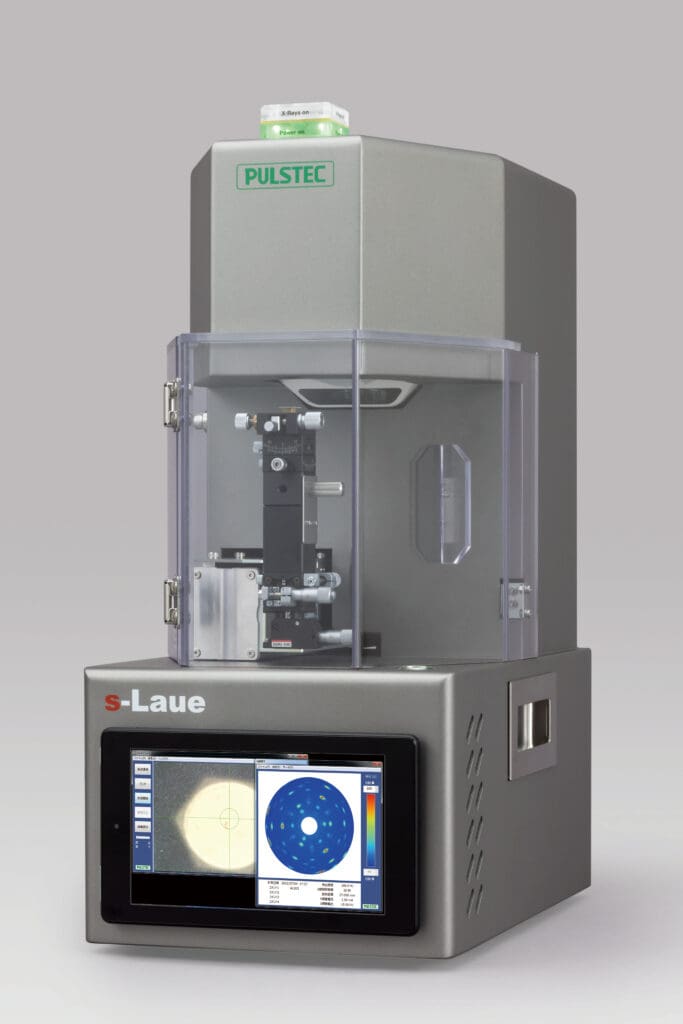
Learn More From Pulstec
Pulstec is a leading manufacturer of electronic equipment, including the s-Laue Single Crystal Orientation System. This new and innovative system is capable of acquiring images of single crystal materials in as little as 60 seconds. It can be used to measure principle plane orientation, check and adjust cutting orientation, evaluate crystallinity, and analyze processing-related crystal growth.
Please contact us today to learn more about the s-Laue or visit our blog for more X-ray diffraction resources.

